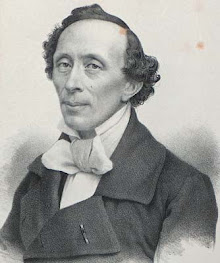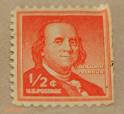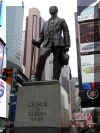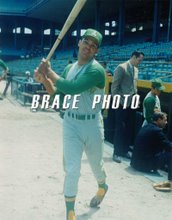Most importantly, I don't want to compare natural disasters because I would not want to diminish the obvious suffering from earthquakes, tsunamis, wildfires, hurricanes etc. But the Black Blizzard tells of Americans who suffered physically or psychologically...continually, for ten years.
This "Dust-Bowl" phenomena or the "Dirty Thirties," took place throughout the 1930's. It centered in the American Great Plains around western Kansas, the panhandles of Texas and Oklahoma as well as the neighboring areas of New Mexico and Colorado. However, a much larger area, extending into Canada was also affected.
 THE DUST-BOWL BEGAN IN THE PRAIRIES THEN SPIRALED OUT OF CONTROL
THE DUST-BOWL BEGAN IN THE PRAIRIES THEN SPIRALED OUT OF CONTROL
Oddly, the culprit of this ecological, agricultural and human catastrophe is man himself. Prairies are grasslands that were not intended by nature to be plowed under. Without going into specifics (you should see the documentary), man wasn't clever enough to protect these lands from erosion. After years of prosperity, 1930 brought a severe drought to region. In an over-simplification, without the grass to anchor the valuable topsoil down, strong winds were able to blow it away. The soil returned to earth as dust. Then when more strong winds returned, vast amounts of dust became airborne.
 TYPICAL DUST STORM, STRATFORD TEXAS 1935.
TYPICAL DUST STORM, STRATFORD TEXAS 1935.The Stratford picture does not tell the whole story. Some dust storms lasted for hours, some for days. Great tracts of land covering large counties frequently had to "dig-out" as if had snowed. Far worse, because there was no insulation, the high winds brought the soot through the smallest crevices, into every house, building, car etc. There was no place to hide. The dust covered every inch both inside and out. It may have been inconvenient and dirty to wake-up in a blanket of dust, but the coarse particles got into people's throats and many (especially the very young and old), developed painful lifelong and/or fatal breathing problems (similar to black lung disease) that was generally categorized as; dust pneumonia.
The cycle of devastation continued when the air-borne dust blocked the sunlight and further hampered the rainfall process. The farms that had flourished for decades were reduced to next to nothing. In addition to the growers having no produce to eat, the livestock that relied on those crops also starved...without animals, the farmers source of meat was drastically cut...plus, without produce to sell, they couldn't buy food. Then the farmers went broke and couldn't pay-off their loans. The banks foreclosed...and folks were kicked off land that in some cases had been in their families for generations.
When it seemed that life in the Dust-Bowl couldn't get worse, pestilence of biblical proportions invaded. To survive, the bird and rodent population evacuated the area. Without natural predators, jack-rabbits and insects; like centipedes and grasshoppers ate or destroyed whatever foodstuff that might have been salvageable.
John Steinbeck's novels, "THE GRAPES OF WRATH (1939)" and "OF MICE AND MEN (1937)" as well as the Woody Guthrie's autobiography, "BOUND FOR GLORY (1943)" helped the public to sympatize with the homeless half-million who migrated to west. But years earlier, when the plight of the "Okies" needed to be addressed, it went mostly unnoticed.
National awareness finally increased when magazines started buying-up photographs depicting the acute suffering. Reporters from the east came to investigate the Dust-Bowl as well as the horrific conditions being endured by those who, motivated by exaggerated claims of good paying jobs as seasonal produce pickers, navigated the torturous road to California.
 FAMOUS MAGAZINE PHOTO CAPTURING DUST-BOWL HOPELESS AND SORROW.
FAMOUS MAGAZINE PHOTO CAPTURING DUST-BOWL HOPELESS AND SORROW.For the most part, the rest of the country still focused its own financial problems until one of the most severe two-day dust storms came out of America's mid-section.
 IF CAUGHT OUTSIDE, THE IMPACT OF A DUST STORM WAS LIKE A CONTINUOUS SHOVELFUL OF FINE SAND HITTING YOUR FACE AT 80MPH.
IF CAUGHT OUTSIDE, THE IMPACT OF A DUST STORM WAS LIKE A CONTINUOUS SHOVELFUL OF FINE SAND HITTING YOUR FACE AT 80MPH.On May 9, 1934 a dust storm's wrath was soon felt in Chicago. Dirt fell from the sky like snow and people took notice. Two days later, the remnants of the same storm poured down on Buffalo, Boston, New York City and Washington. President Franklin D. Roosevelt took action and sent surveyors and agricultural experts to establish a line of attack. Then on April 14, 1935, the worst dust storm in recorded U. S. history took place. "BLACK SUNDAY," dominated by a two-thousand mile wide gauntlet that reached two miles in height, swept across the country and littered the southeast with sandy residue before dumping whatever was left in the Atlantic Ocean.
 THE WORST OF THE WORST "BLACK SUNDAY" IN KANSAS
THE WORST OF THE WORST "BLACK SUNDAY" IN KANSASGreat Plains resident, Avis D. Carlson wrote of Dust-Bowl life in the New Republic, "People caught in their own backyards grope for the doorstep. Cars come to a standstill for no light in the world can penetrate that swirling murk. The nightmare is deepest during the storm. But on the occasional bright day...and the usual gray day, we can not shake from it. We live with dust, eat it and sleep with it. We watch it strip us of our possessions and hope of possessions. It is becoming real. The poetic uplift of spring fades into a phantom of the storied past. The nightmare is becoming life."
There is so much more, see "THE BLACK BLIZZARD," it's a two-hour documentary airing on the "HISTORY CHANNEL." In addition to incorporating the causes, affects and remedies...vivid recreations, under laboratory conditions, help give the viewer an idea of the hardship that killed an estimated 7000 people. Then in more human terms, interviews with survivors further illustrate perhaps America's worst natural disaster.



































































































































































































No comments:
Post a Comment